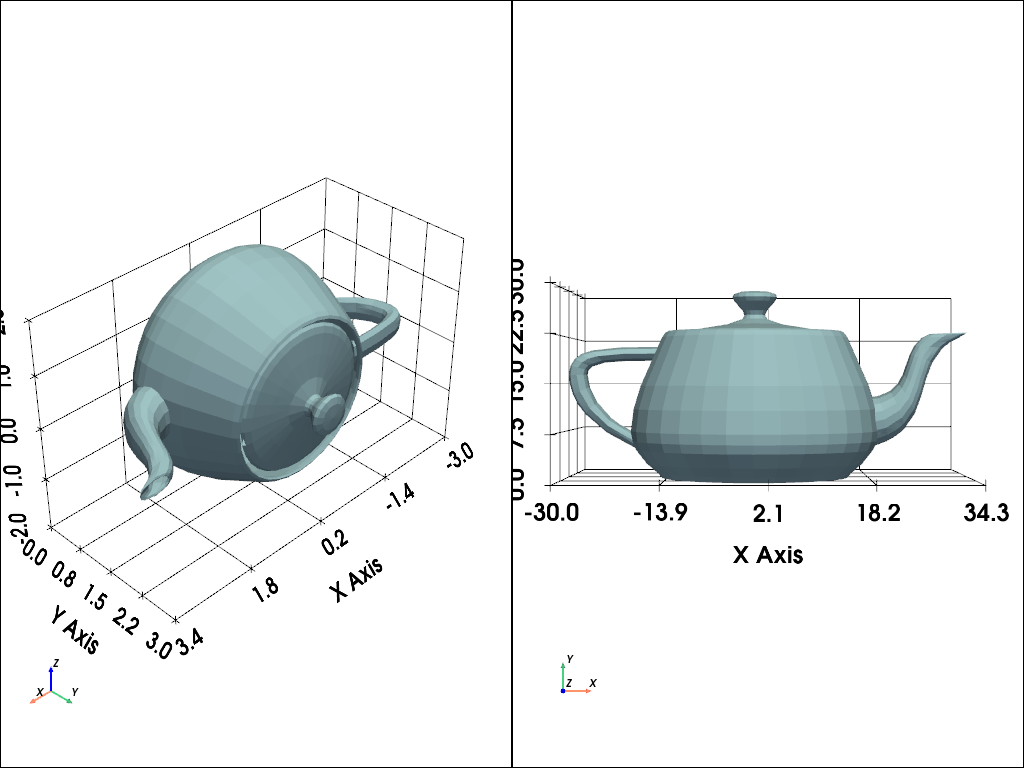pyvista.DataObjectFilters.scale#
- DataObjectFilters.scale(
- xyz: float | VectorLike[float],
- transform_all_input_vectors: bool = False,
- inplace: bool = False,
- point: VectorLike[float] | None = None,
Scale the mesh.
Note
See also the notes at
transform()which is used by this filter under the hood.- Parameters:
- xyz
float|VectorLike[float] A vector sequence defining the scale factors along x, y, and z. If a scalar, the same uniform scale is used along all three axes.
- transform_all_input_vectorsbool, default:
False When
True, all input vectors are transformed. Otherwise, only the points, normals and active vectors are transformed.- inplacebool, default:
False Updates mesh in-place.
- point
VectorLike[float],optional Point to scale from. Defaults to origin.
- xyz
- Returns:
DataSet|MultiBlockScaled dataset. Return type matches input unless input dataset is a
RectilinearGrid, in which case the output datatype is aStructuredGrid.
See also
pyvista.Transform.scaleConcatenate a scale matrix with a transformation.
Examples
>>> import pyvista as pv >>> from pyvista import examples >>> mesh1 = examples.download_teapot() >>> mesh2 = mesh1.scale([10.0, 10.0, 10.0], inplace=False)
Plot meshes side-by-side
>>> pl = pv.Plotter(shape=(1, 2)) >>> # Create plot with unscaled mesh >>> pl.subplot(0, 0) >>> _ = pl.add_mesh(mesh1) >>> pl.show_axes() >>> _ = pl.show_grid() >>> # Create plot with scaled mesh >>> pl.subplot(0, 1) >>> _ = pl.add_mesh(mesh2) >>> pl.show_axes() >>> _ = pl.show_grid() >>> pl.show(cpos='xy')
